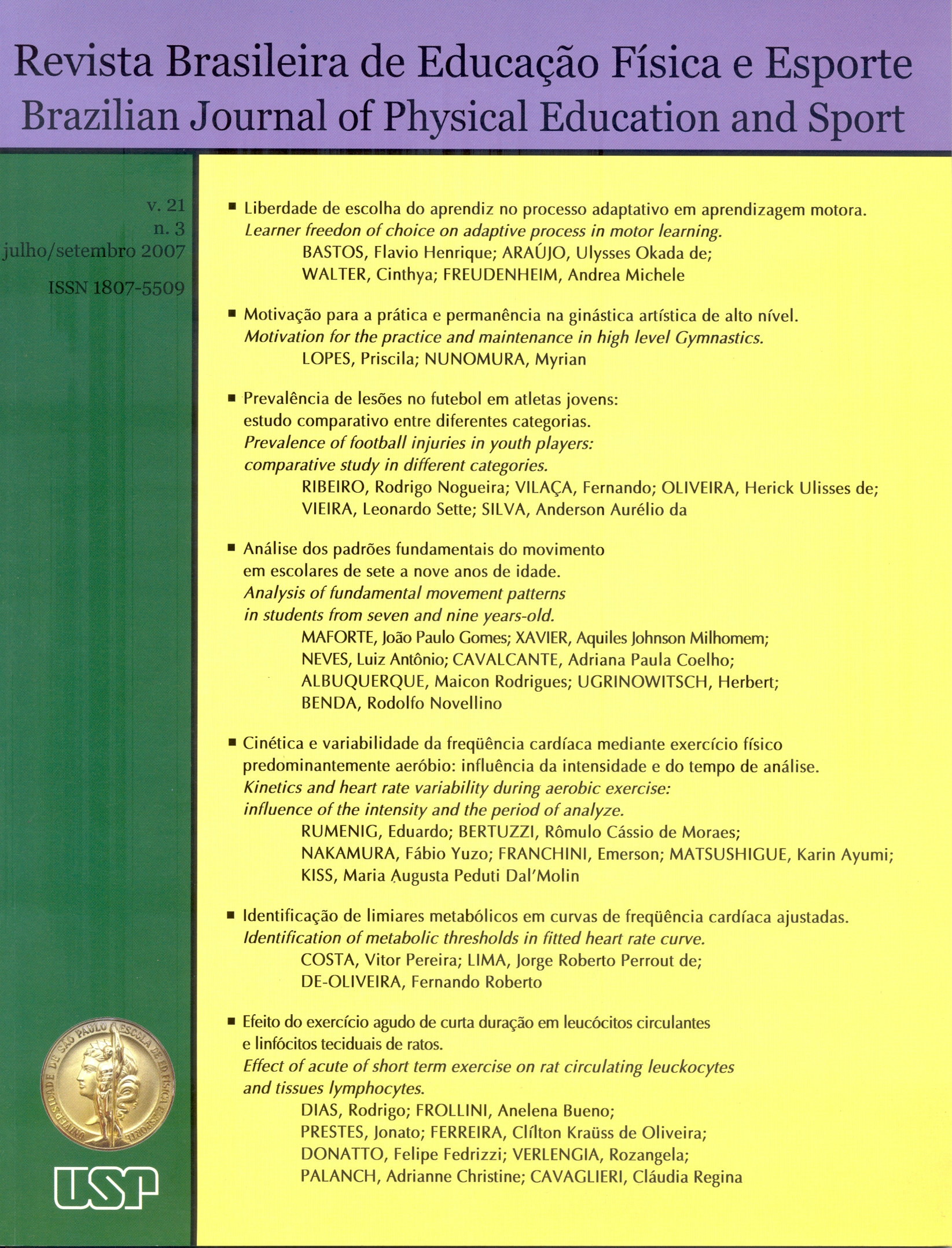Learner freedom of choice on adaptive process in motor learning
DOI:
https://doi.org/10.1590/S1807-55092007000300001Keywords:
Motor learning, Freedom of choice, Adaptive processAbstract
The purpose of this study was to investigate the effect of freedom of choice, when offered during the stabilization of a motor skill, on the adaptation process involving a motor task modification. Forty eight volunteers of both genders, with average age of 21 years (± 5,6), were randomly divided in three groups according to freedom of choice degree: high (ALT), intermediate (MED) and without freedom of choice (SEM). A complex coincident timing task was used. Each participant was requested to touch six response keys, trying to hit the last one in coincidence with a visual stimulus. The experiment consisted of two phases, namely stabilization and adaptation. In the beginning of the adaptation phase, the motor task modification perturbed all three groups, as an increase in execution errors and a decrease of both precision (absolute error) and consistency (variable error) of the performance was verified. Although all three groups improved their performance during the adaptation phase, the SEM group showed signs of a less efficient adaptation. Thus, the findings indicate that, as a result of a motor task modification, the freedom in response choice was beneficial to adaptation irrespective of degree.Downloads
Download data is not yet available.
Downloads
Published
2007-09-01
Issue
Section
naodefinida
License
Todo o conteúdo da revista, exceto onde está identificado, está licenciado sob uma Licença Creative Commons (CC-BY)
How to Cite
Bastos, F. H., Araújo, U. O. de, Walter, C., & Freudenheim, A. M. (2007). Learner freedom of choice on adaptive process in motor learning . Brazilian Journal of Physical Education and Sport, 21(3), 167-176. https://doi.org/10.1590/S1807-55092007000300001


